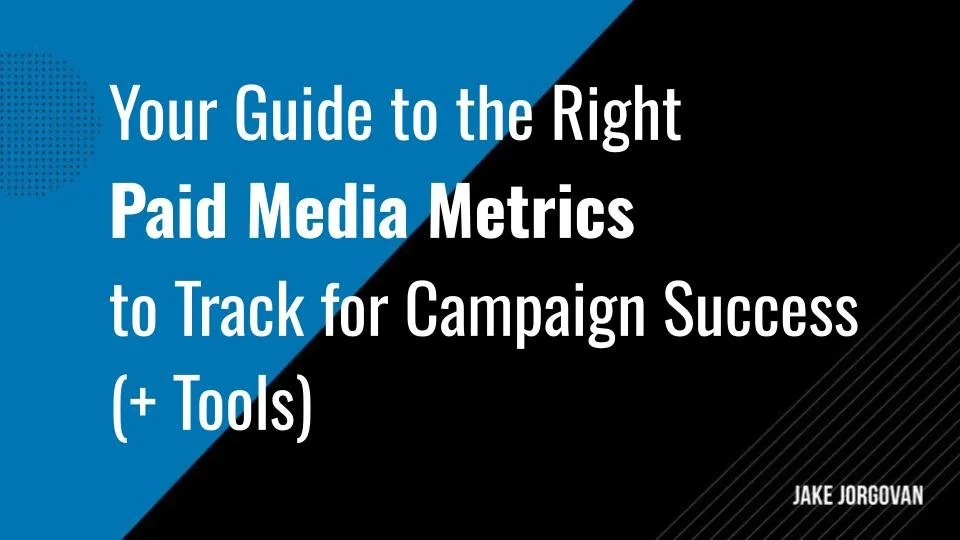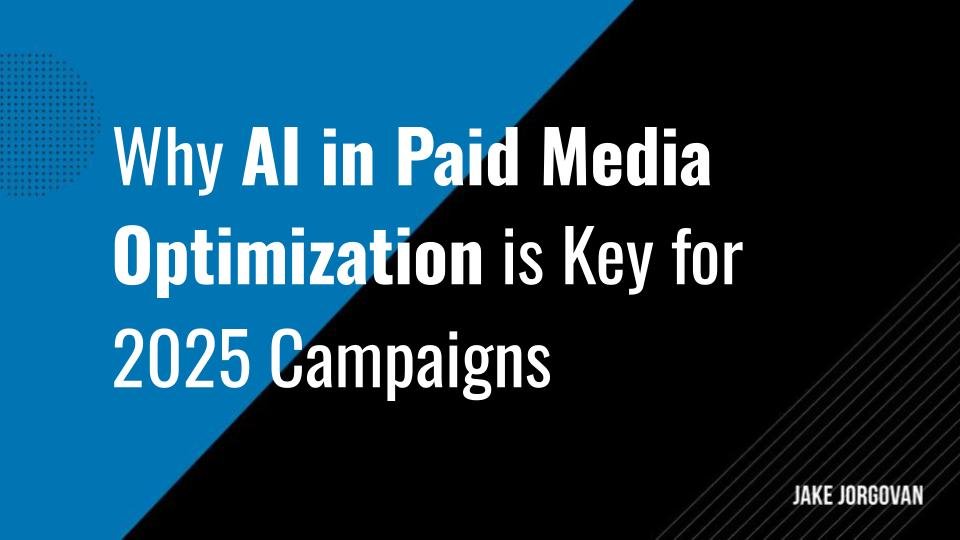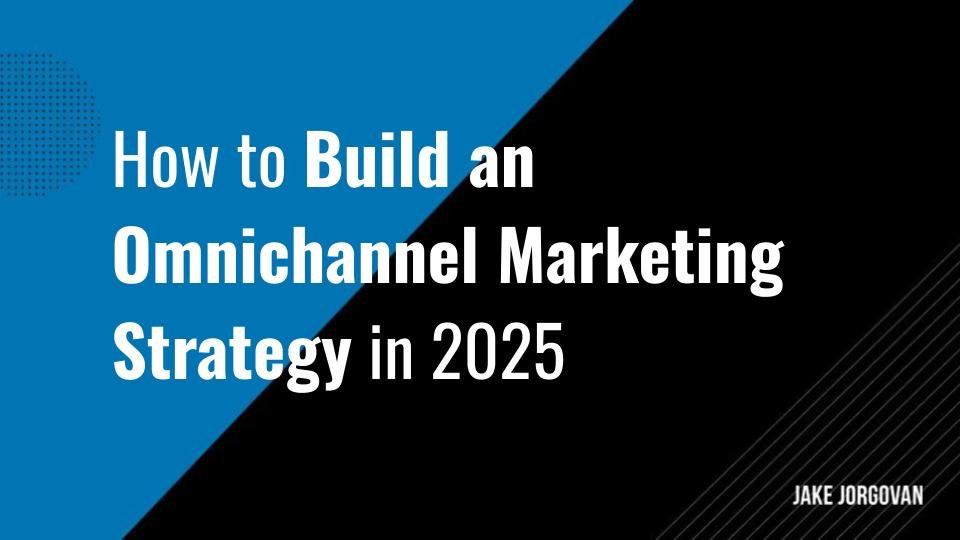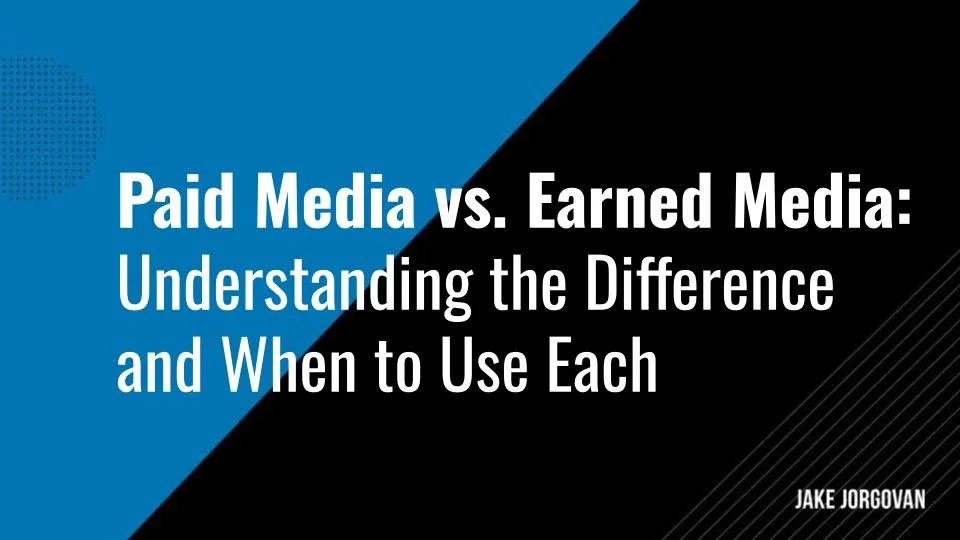The Future of Programmatic Advertising: 7 Trends Shaping Paid Media in 2025
Programmatic advertising has transformed how brands connect with audiences, evolving from rudimentary automated buying to a sophisticated ecosystem that optimizes ad spending through real-time bidding and machine learning.
Its significance in the digital context continues to surge, with projections indicating a rise to $2772.7 billion by 2028.
As we approach 2025, the market is being shaped by several trends:
AI-driven optimization
Contextual targeting
Cross-channel attribution
Emerging formats
Privacy-First advertising
Blockchain integration
Immersive experiences
Keep reading to dive deeper into each trend and leverage the opportunities they bring.
Trend #1. AI-Driven Optimization
AI-driven optimization is becoming indispensable for programmatic advertising, offering unique advantages that enhance performance marketing efforts beyond traditional methods:
Enhanced efficiency: AI tools can sift through vast data sets to optimize bids and placements, making split-second decisions that outperform human analysis. This results in higher ROIs by automating processes that previously took hours or days.
Real-time adjustments: With AI, advertisers can continuously refine their targeting in real time. This enables brands to adjust their messaging or budgets based on evolving user behavior without manual intervention, leading to more precise and relevant ad delivery.
Personalized user experiences: AI allows for deep personalization by analyzing user patterns and preferences across platforms. It can predict what content or product a user is likely to engage with, improving engagement rates and conversions by delivering hyper-targeted ads at the right moments.
To fully leverage AI-driven optimization in programmatic advertising, consider these actionable steps:
1. Implement dynamic budget allocation
Use AI to automatically shift your budget between campaigns, ad sets, or platforms in real time. This ensures that funds go to the highest-performing areas without manual oversight, improving ROI consistently.
2. Adopt predictive audience segmentation
Leverage AI to analyze historical data and identify emerging audience segments before they surface through traditional analysis. This gives you a proactive approach to targeting new potential customers with personalized messages.
3. Use AI for creative optimization
Implement machine learning tools that continuously test and optimize creative elements (headlines, CTAs, images) to ensure the most engaging content reaches your audience at the right time.
4. Integrate AI with multi-channel campaigns
Use AI-driven insights to synchronize messaging across various channels (social, display, CTV) for a seamless user experience, ensuring consistency in communication and optimized touchpoints across platforms.
Capitalize on AI's speed by setting real-time alerts for significant performance changes in your campaigns.
This enables you to intervene swiftly, making tactical adjustments that align with evolving market conditions and audience behaviors, keeping your strategies both current and competitive.
Future Outlook: In the near future, expect AI to dominate programmatic advertising, sharpening ad targeting precision and boosting ROI across platforms. As technology evolves, AI's role will expand, enabling more sophisticated multi-channel integration and analytics to drive cost-effective, highly targeted ad campaigns that resonate across user touchpoints.
Trend #2. Contextual Targeting and the Cookieless Future
Contextual targeting and the shift toward a cookieless future offer distinctive benefits in programmatic advertising:
Improved user privacy: This approach respects user privacy by relying on the context of the content being viewed rather than individual user data. This aligns with increasing global data protection regulations, enhancing consumer trust in your brand.
More relevant ad placements: Ads are matched with content that aligns with your product or service, ensuring higher relevance. For instance, displaying fitness ads on health and wellness videos. This relevance naturally increases user engagement without needing personal data.
Reduced ad fatigue: By focusing on context rather than frequency, users see ads that feel more natural within the content they consume. This decreases the likelihood of ad fatigue and keeps your audience more engaged. The last thing you want is to have your prospects overwhelmed by repetitive, irrelevant ads.
To capitalize on contextual targeting in the cookieless future, here are four actionable steps:
1. Contextual AI platforms
Invest in platforms that use natural language processing (NLP) and machine learning to scan page content. These tools can intelligently place ads where the context closely aligns with your audience, ensuring relevance without relying on personal data.
2. Test and optimize content categories
Instead of relying on cookies, experiment with ad placements across various content categories relevant to your product. Analyze performance to find which contexts generate the most engagement or conversions.
3. Leverage real-time data
Use tools that can analyze page context in real time to adjust ad placements dynamically. This allows you to target users with the most up-to-date and relevant content, increasing engagement while respecting privacy regulations.
4. Prioritize content alignment over user profiles
Focus your ad strategy on content alignment rather than personal data collection. Ads matched to the context of the content will feel more organic and be more likely to capture user interest.
Explore partnerships with publishers who are also preparing for a cookieless future.
Collaborating directly allows you to create bespoke advertising solutions that naturally fit within their content, ensuring relevance and compliance while enhancing ad performance.
This method amplifies your brand's precision in reaching the right audience.
Future Outlook: As technology advances, natural language processing (NLP) will increasingly drive programmatic advertising. Expect more sophisticated NLP tools that can analyze the context of web pages more deeply, ensuring that ads align perfectly with content themes. This progression will enhance the relevancy of ads, reducing disruption and improving user engagement.
Trend #3. Cross-Channel and Cross-Device Attribution
Cross-channel and cross-device attribution provides clear advantages for programmatic advertising, moving beyond fragmented data to offer comprehensive campaign insights:
Improved attribution models: With cross-channel attribution, you can see a full picture of how users engage across platforms, providing better insight into what actually drives conversions. This results in a more accurate assessment of campaign performance, allowing you to refine your targeting and make more informed decisions.
Enhanced user experience: Cross-device tracking ensures ads remain relevant across devices—users who start researching on mobile and later switch to desktop receive consistent messaging. This seamless experience boosts brand perception and ensures users remain engaged without feeling bombarded.
Smarter ad spend allocation: By tracking user touchpoints across multiple channels, cross-channel attribution reveals the most effective channels for each conversion. This means you can allocate budgets more efficiently, ensuring investments target the highest-performing platforms and ultimately driving a better return on ad spend.
To fully leverage cross-channel and cross-device attribution in your programmatic advertising strategy, consider these actionable steps:
1. Implement unified tracking solutions
Use tracking tools that offer unified attribution across all channels and devices. This enables you to consolidate data from multiple touchpoints, ensuring you can accurately assess user journeys without missing important interactions.
2. Develop custom attribution models
Default attribution models might not reflect your campaign goals. Build customized models based on your typical customer journey to measure the channels that contribute most effectively to conversions. That will create a more tailored view of your ad performance.
3. Synchronize ad messaging across devices
Ensure your messaging remains consistent when users switch devices. For example, someone engaging with an ad on a smartphone should see a similar offer when they revisit your website on a desktop. The point is to create continuity that improves the likelihood of conversions.
4. Optimize channels based on insights
Use attribution data to identify top-performing channels at each stage of the funnel. Invest in channels that drive awareness, consideration, and action most effectively. You want to refine your cross-channel strategy for maximum ROI.
Integrate a data clean room strategy to facilitate secure data sharing between partners without compromising user privacy.
This setup allows you to measure cross-platform impact more precisely so that your attribution models reflect actual user behavior across different advertising environments.
Future Outlook: Expect brands to increasingly adopt sequential messaging across multiple platforms, fine-tuning the timing and content of messages to enhance campaign cohesion. As technology advances, these strategies will become more sophisticated. They’ll utilize cross-device data to ensure consistent and compelling storytelling that resonates with users at every touchpoint.
Trend #4. The Growth of CTV and Digital Video Advertising
The growth of Connected TV (CTV) and digital video advertising is experiencing a significant surge in 2025.
CTV ad spending is projected to hit $30.1 billion this year, a 22.4% increase from 2023, solidifying its position as the fastest-growing ad channel in the U.S.
Connected TV (CTV) and digital video advertising are gaining momentum, offering advertisers powerful benefits in programmatic campaigns:
Precise targeting: You can target viewers based on specific demographic and behavioral data with CTV and digital video. This precision ensures your ads reach the most relevant audience. This reduces waste and maximizes engagement on premium content platforms.
Immersive experiences: Digital video allows brands to create immersive, high-quality content that deeply engages viewers. Formats such as shoppable videos or interactive overlays enable consumers to interact with your brand directly, driving more meaningful engagement compared to static ads.
High engagement rates: Video ads, especially on CTV, typically deliver higher engagement rates than traditional display ads. The larger screen sizes, non-skippable formats, and engaging content offer viewers a more focused and uninterrupted experience. The benefit is increasing the likelihood of positive brand interactions
To maximize the potential of CTV and digital video advertising, consider these actionable steps:
1. Adopt dynamic creative optimization (DCO)
Use DCO tools to personalize video ads based on viewer data. Tailor messaging, visuals, or calls-to-action dynamically to make sure each viewer receives content most relevant to their preferences. That increases the likelihood of engagement.
2. Leverage sequential storytelling
Use a series of connected video ads across CTV and digital channels to tell a cohesive brand story. This approach enhances engagement by leading viewers through a logical narrative journey, building brand recall over multiple touchpoints.
3. Test shoppable video ads
Introduce shoppable video ads that let viewers interact directly with products in real time. These ads turn passive viewing into an active experience, encouraging immediate actions like adding to the cart and, thus, driving conversions.
4. Use contextual ad placement
Place ads in the most contextually relevant programming. Aligning your content with the viewer's current activity or interests increases the chances of a positive response and, therefore, boosts campaign performance.
Explore advanced audience segmentation to refine your CTV and digital video ad placements further.
Segment viewers not just by demographics but by viewing habits and preferences.
This allows you to target ads during specific types of content, maximizing relevance and viewer receptivity.
Future Outlook: Video advertising will continue to expand within programmatic channels, becoming the dominant format due to its high engagement potential and versatility across devices. As CTV and digital video platforms grow, advertisers will leverage interactive and immersive formats. That means they’ll soon drive deeper audience connections and improve campaign performance across a range of digital environments.
Trend #5. Privacy-First Advertising and Data Compliance
Privacy-first advertising and data compliance offer these benefits for the future of programmatic advertising:
Increased user trust: Prioritizing user privacy fosters a stronger relationship with consumers. When users know their data is being handled transparently and ethically, they are more likely to engage with your brand and its content. This trust translates to longer-term brand loyalty.
Legal compliance: By adhering to data privacy regulations such as GDPR and CCPA, you protect your brand from costly fines and legal repercussions. This compliance not only keeps you within legal boundaries but also ensures your advertising strategy remains viable as regulations evolve.
Sustainable data usage: Privacy-focused approaches encourage the use of first-party data, which is inherently more accurate and sustainable over time. By building direct relationships with your audience and collecting consented data, you rely less on third-party cookies. That makes your advertising efforts more resilient and future-proof.
To implement a privacy-first advertising strategy effectively, consider these actionable steps:
1. Adopt transparent opt-in practices
Clearly communicate what data you collect and how it will be used. Offer users easy-to-understand opt-in mechanisms that comply with privacy laws, ensuring they feel in control of their personal information.
2. Enhance first-party data collection
Focus on building your own databases through customer interactions such as sign-ups, subscriptions, and loyalty programs. This not only complies with privacy regulations but also provides you with valuable, actionable insights directly from your customers.
3. Apply privacy by design principles
Integrate privacy into your advertising technologies and business practices from the ground up. Ensure that all new products, services, and processes are designed with privacy as a fundamental component. The point is to minimize data risks from the outset.
4. Regularly audit data practices
Conduct regular audits of your data collection, storage, and processing practices to ensure they remain compliant with the latest regulations. This proactive approach helps identify potential vulnerabilities and correct them before they become issues.
Incorporate zero-party data collection strategies into your approach.
Ask your audience directly for preferences, interests, or needs during interactions.
This data is more valuable and future-proof, since it’s willingly provided.
Using zero-party data minimizes privacy concerns while offering deeper insights into what drives engagement.
Future Outlook: As privacy regulations tighten, expect targeting strategies to prioritize user consent and transparency. First-party and zero-party data will become key in a cookieless world, driving personalized campaigns. Tools built around privacy-first principles will dominate, enabling brands to balance precision targeting with ethical data usage and user control.
Trend #6. Blockchain Technology for Ad Fraud Prevention
Blockchain technology in programmatic advertising introduces several compelling benefits:
Enhanced trust between advertisers and publishers: Blockchain creates a transparent, immutable ledger of all transactions. Therefore, both parties can verify the authenticity of ad placements and financial transactions. This transparency builds trust, as each party can see and verify the details of every ad transaction. The main benefit is eliminating discrepancies and fostering a more cooperative relationship.
Reduced fraud: Blockchain technology drastically reduces the possibility of fraud by securing ad delivery data on a blockchain. Blockchain ensures that every ad impression is recorded and validated, making it nearly impossible for fraudulent entities to claim payment for fake impressions or clicks. This security feature significantly lowers the risk of ad fraud.
Validated traffic: Blockchain technology verifies the legitimacy of traffic sources in real time, ensuring that advertisers pay only for genuine user engagement. It provides cryptographic proof of the user's actions, confirming that they are not bots but real users interacting with the ads. This validation ensures that advertising spend is allocated to reaching real, interested consumers.
To effectively leverage blockchain technology for ad fraud prevention in programmatic advertising, consider these strategies:
1. Integrate blockchain with existing ad platforms
Begin by integrating blockchain technology with your current advertising platforms. This involves developing or adopting blockchain-based solutions that can track ad deliveries and transactions. This layer of transparency helps verify the legitimacy of each ad impression and payment.
2. Collaborate on industry-wide standards
Work with industry consortiums or groups to help establish and adopt blockchain standards for advertising. Standardization ensures that all parties use a unified system for tracking and verification, which simplifies integration across different platforms and enhances the reliability of fraud prevention measures.
3. Educate stakeholders on blockchain benefits
Conduct training sessions and workshops for your team and partners about the advantages of blockchain in advertising. Focus on its capacity to enhance transparency, reduce fraud, and validate ad traffic. Educated stakeholders are more likely to support and effectively implement blockchain solutions.
4. Pilot blockchain projects
Start with small-scale pilot projects to test the effectiveness of blockchain in reducing fraud within your advertising campaigns. Monitor these projects closely to understand the impact of blockchain on fraud prevention and scale up successful practices across larger campaigns.
Consider using smart contracts to automatically handle transactions and payments in your blockchain-based advertising system.
These contracts can be programmed to release payments only after verifying that an ad has been properly displayed and engaged with by real users, ensuring each dollar spent is truly effective.
Future Outlook: As blockchain technology evolves, its role in advertising will significantly expand, especially in enhancing ad integrity and security. Expect broader adoption as blockchain proves effective in combating fraud, leading to more robust, secure advertising networks where transactions and audience engagements are verifiable, reducing risks and increasing trust industry-wide.
Trend #7. Immersive Ad Formats: AR, VR, and In-Game Advertising
Immersive ad formats like AR, VR, and in-game advertising are rapidly growing. The AR and VR market is projected to nearly double by 2028, driven by advancements in mobile and immersive technologies.
Plus, it’s already boosting customer engagement by 40% in retail. In-game ads are also booming, with the gaming industry set to exceed $74 billion by 2027, making in-game advertising increasingly significant.
Here are their unique capabilities:
Highly engaging user experiences: AR and VR ads place users inside interactive environments so they can interact with products or scenarios in a simulated space. This leads to a deeper connection and memorable experiences.
Increased brand loyalty: Interactive content provided by AR, VR, and in-game ads leads to stronger emotional connections with brands. As users engage more actively with these ads, their likelihood of developing brand loyalty increases due to the personalized and enjoyable interactions.
Enhanced recall and conversion rates: The immersive nature of these formats means that users are not just viewers but participants. This participation leads to higher recall rates for the advertised products or services and results in better conversion rates compared to traditional advertising formats.
To effectively harness AR, VR, and in-game advertising within your programmatic campaigns, consider these strategic steps:
1. Develop platform-specific content
Craft ad content specifically designed for AR and VR platforms to fully utilize their capabilities. This ensures that your ads are optimized for immersive experiences, enhancing user engagement.
2. Partner with gaming and VR developers
Collaborate with game developers and VR content creators to integrate your ads seamlessly into their environments. This can include sponsored virtual events or branded in-game items that fit naturally within the game world. The goal is to create a non-disruptive user experience.
3. Use interactive demos
For products that benefit from demonstration, create interactive AR demos that allow users to visualize products in their own space or manipulate them virtually. This can greatly enhance understanding and interest, driving higher conversion rates.
4. Track engagement metrics specifically tailored to immersive media
Go beyond traditional click-through rates and develop metrics that capture the depth of interaction with AR, VR, and in-game ads, such as time spent interacting with a feature or completion rates of a game-based challenge.
To enhance your AR and VR ad campaigns, consider running A/B tests with varying degrees of interactivity.
Measure how different levels of user engagement affect brand recall and conversion.
This will help you fine-tune the balance between immersion and message clarity, optimizing the effectiveness of your immersive ads.
Future Outlook: As AR and VR technologies advance, their integration into programmatic advertising systems will deepen. These formats will become essential tools for delivering highly personalized and engaging experiences directly within user environments, effectively blurring the lines between digital content and reality for more impactful advertising outcomes.
Adapting to the Future: Mastering Programmatic Advertising Trends for 2025
As you can see, programmatic advertising is evolving rapidly, driven by AI, privacy concerns, and immersive technologies.
You must adapt by leveraging trends like AI-driven optimization, contextual targeting, and cross-channel attribution.
Staying ahead requires continuous innovation and commitment to user privacy.
To succeed, align your strategies with these developments, ensuring ethical data use and seamless integration of emerging ad formats.
Also, use privacy-first practices and explore AR, VR, and blockchain for fraud prevention.
Remember to stay flexible and forward-thinking. It’s the best way to make sure your programmatic efforts remain competitive.
🎯 Ready to learn more? Recommended reads:

























![Top 22 Paid Media Agencies to Work With in 2025 [Updated in March]](https://images.squarespace-cdn.com/content/v1/50baa49de4b0e51d69257e33/1705515561307-56Z45GN80B4L6J77ELDR/Top+12+Paid+Media+Agencies+to+Work+With+in+2024+%5BUpdated%5D.jpg)











